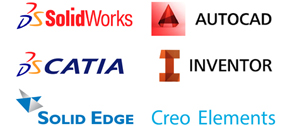The gesture-technology plot has thickened in the goopiest of ways with Apple (AAPL) apparently buying Israel’s PrimeSense for about $350 million.
Apple did not come right out and confirm the acquisition, of course. That would be too easy. But when asked about it on Sunday, Apple spokeswoman Kristin Huguet said in an e-mail: “Apple buys smaller technology companies from time to time, and we generally do not discuss our purpose or plans,” which tends to be Appletalk for a confirmation of an acquisition. (Globes, an Israeli newspaper, reported the deal over the weekend.)
PrimeSense rose to prominence alongside the release of Microsoft (MSFT)’s initial Kinect gaming sensor used with the Xbox console. The startup built the hardware, including a clever chip that could look out into a living room and see peoples’ body movements. Microsoft added the software and algorithms that made the Kinect really smart.
But here’s the thing: Microsoft does not rely on PrimeSense anymore. The Xbox One that hit store shelves last week has a Kinect sensor based on technology that Microsoft acquired in 2010 when it bought Canesta, a rival to PrimeSense. Over the years, Canesta had earned a reputation for having some of the most sophisticated gesture-recognition technology, while PrimeSense was seen more as a savvy assembler of off-the-shelf technology. Microsoft has also acquired other gesture players such as 3DV Systems and has a mountain of intellectual property in the arena.
So to say that Apple is late to the gesture game would be something of an understatement. It’s picking up affordable, proven technology. But there will be big-time questions around how the PrimeSense gear can evolve and how Apple’s gesture-patent portfolio will match up with those of existing players. Intel (INTC), for example, has also spent the last couple of years buying small gesture-technology specialists and intellectual property, and Google (GOOG) recently purchased the motion-tracking startup Flutter.
Game console and TV makers have been among the most active users of gesture technology for a couple of reasons. The gesture sensors tend to work better when they’re bulkier and can suck in the most possible light, and they serve an obvious function in the living room as remote-control replacements. It’s clear enough, though, that some kind of gesture technology will be a fixture in about every computer and smartphone in the years to come.
As my colleagues at Bloomberg News have reported, PrimeSense has some promising technology for these new markets:
In addition to its use in gaming, PrimeSense has been developing new depth-sensing technology that allows for a 3D camera in a mobile phone to enable apps like indoor navigation tools or 3D shopping catalogs. PrimeSense also has said its technology can be used for measuring depth, allowing a person to take a photo of their living room into a furniture store to determine if a sofa would fit in the space.
The field of gesture-recognition technology provides a nice reminder of how long it can take to develop really tough stuff. Canesta, for example, was founded in 1999 and is only now seeing its software go mainstream inside the Kinect.
via apple - Google News http://news.google.com/news/url?sa=t&fd=R&usg=AFQjCNFb-3dshRBUwiAszYbtm9M3JYJeBQ&url=http://www.businessweek.com/articles/2013-11-25/apple-buys-primesense-for-350-million-a-late-move-into-gesture-technology













0 comments:
Post a Comment